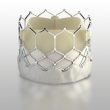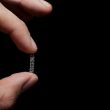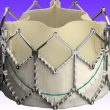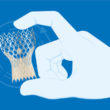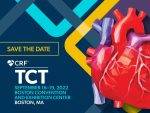The safety and efficacy of transcatheter aortic valve replacement (TAVR) is already established. However, it still poses a challenge for conduction disturbances, such as the need for pacemaker or new onset left bundle branch block (LBBB). The current rate for the latter ranges from approximately 11% to 19%. In most cases, 50% of LBBB reverses<a href="https://solaci.org/en/2023/01/31/tavr-and-new-onset-lbbb/" title="Read more" >...</a>
Resistant Obstructive Hypertrophic Cardiomyopathy: Myomectomy or Septal Ablation?
Approximately 70% of hypertrophic cardiomyopathies (HCM) are associated to a left ventricular outflow tract (LVOT) obstruction and mitral valve failure leading to dyspnea and cardiac failure in a high number of patients. Even though at present there are effective drug treatments combined with pacemaker implantation, surgery (septal myomectomy (SM) continues to be the first choice<a href="https://solaci.org/en/2023/01/25/resistant-obstructive-hypertrophic-cardiomyopathy-myomectomy-or-septal-ablation/" title="Read more" >...</a>
Real-World Results of Different Devices for TAVR
Transcatheter aortic valve replacement (TAVR) keeps growing in terms of the development of new devices, more extensive operator experience, and enhanced procedure planning. Nowadays, there are multiple device options, which depend on patient characteristics and operator experience. Two-arm studies compared these devices, analyzing the potential benefits of a certain valve over the others. This multicenter<a href="https://solaci.org/en/2023/01/04/real-world-results-of-different-devices-for-tavr/" title="Read more" >...</a>
We Should Treat Significant Stable CAD in Patients Undergoing TAVR
Aortic stenosis is associated to significant coronary artery disease (CAD) in nearly 50% of cases. When we decide to treat aortic disease using surgery, it has been established we should also treat heart disease. However, when using transcatheter aortic valve replacement (TAVR), this is still unclear, given that in many occasions we see stable lesions<a href="https://solaci.org/en/2022/12/30/we-should-treat-significant-stable-cad-in-patients-undergoing-tavr/" title="Read more" >...</a>
Is There any Difference between Modern Valves and Self and Balloon Expandable Valves?
At present TAVR is a valid alternative to treat different risk groups of patients with severe aortic stenosis. Among the different valves, there are two types, the self-expanding (SEV) and the balloon expandable (BEV) valves, that are the most implanted and the most researched by randomized studies across different risk groups. There are different generations<a href="https://solaci.org/en/2022/12/16/is-there-any-difference-between-modern-valves-and-self-and-balloon-expandable-valves/" title="Read more" >...</a>
Valve-in-Valve Shows Good Evolution after 2 Years
The degeneration of bioprostheses in aortic position occurs at approximately after 10 to 15 years. In this scenario, the treatment of choice used to be redo surgery, but with the evolution of transcatheter aortic valve replacement (TAVR), it became a valid alternative with a level IIa B evidence. While there are currently multiple analyses of<a href="https://solaci.org/en/2022/12/02/valve-in-valve-shows-good-evolution-after-2-years/" title="Read more" >...</a>
SURTAVI at 5 Years
Transcatheter aortic valve replacement (TAVR) by transfemoral access has shown great benefit for different risk groups, but its long-term durability is still uncertain. Available evidence comes from small analysis and a single randomized trial with 280 patients and an 8 year follow-up: the NOTION Trial, where TAVR showed less valvular degeneration than aortic valve replacement (AVR) surgery.<a href="https://solaci.org/en/2022/10/17/surtavi-at-5-years/" title="Read more" >...</a>
Use of OCT FFR on ACS Clinical Outcomes
Patients undergoing acute coronary syndrome (ACS) benefit from percutaneous coronary intervention (PCI). At present, there is no question about this. However, residual ischemia after PCI is associated with a worse prognosis. Angiography studies and intravascular imaging are useful to assess post intervention outcomes, but they are limited when it comes to the physiological assessment of<a href="https://solaci.org/en/2022/10/05/use-of-oct-ffr-on-acs-clinical-outcomes/" title="Read more" >...</a>
TCT 2022 | FRANCE-TAVI Registry: Small Annuli
The presence of small annuli, defined in this registry as < 23 mm diameter or indexed diameter <12 mm/m2 by CT, continues to be one of the greatest challenges of both surgical and endovascular aortic valve treatments. The FRANCE-TAVI Registry looked at 1,195 patients presenting small annuli. 895 (74.9%) received balloon expandable valves (BEV) and<a href="https://solaci.org/en/2022/09/21/tct-2022-france-tavi-registry-small-annuli/" title="Read more" >...</a>
Can We Discharge TAVR Patients the Same Day?
For over a decade, TAVR has been showing great benefits, but conduction abnormalities such as RBBB and prior A-V block, continue to be one of the biggest challenges, since in different series the need for definite pacemaker implantation (PPM) varies between 17 to 30% in the large, randomized studies of self-expanding valves. Even though we<a href="https://solaci.org/en/2022/09/14/can-we-discharge-tavr-patients-the-same-day/" title="Read more" >...</a>


